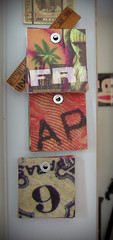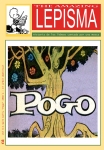The latest NAPSTER commercial offers the following comparison. On top, there is a single iPod. The cost to fill it, Napster says, is $10,000. Beneath it are three MP3 players: the Dell Pocket DJ, the Creative Zen Micro and iRiver's new H10. With Napster to Go, the commercial says, you can fill all three with almost any song you can think of and you're out only $15.
Next to that, in tiny print, are the words "per month."
Ordinarily such a lopsided comparison would make me cringe and conclude that it was aimed at the gullible. But this one made me re-examine my life.
Napster to Go is the latest edition of Napster's legal download service. (Although it was previewed to the public last fall, the software allowing small portable music players to work with it has become available only in the last few weeks.) A vast majority of the available tracks - Napster says 1.3 million - can be downloaded by subscribers without paying additional fees.
What makes Napster to Go different from other subscription services, like Rhapsody ($10 a month) from Real Networks, is that you can load these tracks onto a compatible player and hit the road. As long as the player reconnects to the PC every month to verify your subscription, it feels just like the more common alternative, the one-time à la carte cost of $1 per track or $10 per album.
Of course, the commercial doesn't say you will lose access to music if you stop paying. And Napster's $10,000 reckoning also assumes that everything on an iPod is purchased at the iTunes Music Store. In reality, you could have plenty of MP3's already, from ripping CD's and dredging the Internet.
But the commercial raises a good question: Will you rent albums the way you rent TV programming? If it makes financial sense - and if, armed with that knowledge, you can avoid the competing allure of iPod style and the Apple brand - you just might.
Since Apple opened its iTunes store at the end of 2003, I've purchased 504 songs - that's 21 albums and 224 loose tracks. That means my music diet, excluding a dwindling number of old-timey CD purchases, comes to roughly $30 a month.
Most of my spending has been satisfying: new releases from U2 and Jack Johnson are simply essential, and impulse buys like the Postal Service's "Give Up" and Better Than Ezra's "How Does Your Garden Grow?" have become staples of my week. But many hunches and recommendations got old fast.
More frustrating still, there are hundreds of tracks I've just been too cheap to check out. Even though I have a permanent collection of about 7,000 MP3's - compatible with any service and player - $15 a month is still less than what I spend discovering new music.
Parents with children ages 10 to 20 know how costly the digital music revolution can be. If you look the other way as they download music using ... let's call them gray-market techniques, your PC becomes irreversibly crippled by spyware. But when you try to encourage them to pay for music instead of stealing it, you quickly discover that even a two-album-a-month allowance adds up.
When used to its fullest extent, Napster to Go lays iTunes flat, financially speaking. For the $15 monthly fee, you're allowed unlimited downloads. You can put them on up to three compatible portable players, and log in and listen on up to three PC's. (Napster to Go does charge by the song, however, to burn music to a CD.) Sure, there's an initial investment, and in homes with more than three listeners they'll have to share, but for a low fixed price they can all download as many songs as they want, most of which they will soon forget about anyway.
The value proposition is in place. I know I can get tons of music, but can I get tons of good music? There are bands not yet online at all, like the Beatles, Led Zeppelin and AC/DC. But with Napster to Go there is a new discrepancy: songs you must purchase outright, ones that aren't part of the all-you-can-have subscription deal.
I hit Napster thinking that maybe half of the tracks I'd want would be "buy only." To my amazement, it was less than a tenth. Heavies like Paul Simon, Pink Floyd, Prince, Bruce Springsteen and even, yes, Metallica have made their entire catalogs available for subscription download. The subscription service makes sense for Pearl Jam, which has posted over 80 separate live recordings. Sure, some people bought them before, but now even those without Eddie Vedder tattoos will have a chance to check them out.
I'm not saying that you won't stub your toe against tracks that don't budge until paid for individually. But between your own music collection and what is available, it's easy to see how to build up your core library.
The magic of the subscription plan is that music you don't know is also covered. I got to see if I liked new cuts from the Killers (yep) and Gwen Stefani (nope). Sitting in judgment didn't mean sitting in front of a computer screen, either; I could do it in the driver's seat of my car.
The trouble is, that thing next to me wasn't my trusty iPod. A switch to Napster means kissing your iPod, or any prospect of getting one, goodbye. The Napster-compatible players, at the moment, are the ones from Creative, iRiver and Dell that I tested, as well as others from Samsung, Gateway and Audiovox, ranging in price from $180 to $500. What they have in common is a piece of hardware allowing this sort of subscription content to be used under a Microsoft-powered secure-content system.
I could easily dismiss the players friendly with Napster to Go, but most of my gripes merely translate into this boilerplate: They're not iPods.
More substantial are my complaints with Napster's PC software, which tends to jerk the user around in a very unstable fashion. It takes its sweet time reacting to mouse clicks, and mundane maneuvers make it freeze for minutes. Players often ominously "stop responding" in the middle of something important. It's possible to load the same tracks onto a player twice (an act iTunes most sensibly prohibits). Once you get the hang of the Napster service, a smart move is to use the more stable Windows Media Player 10 as your music manager instead.
For the most part, however, the software and the players do their jobs. So let me ask a question that some may consider heresy: How necessary is the iPod?
I recently discovered (with some horror) that I could live without TiVo. Time Warner Cable offered a box with better picture quality at a better price - about $9 a month with nothing up front. Compared with TiVo, the new box's interface is medieval dentist painful to use, but I use it and I don't look back.
If I could jump from TiVo to Time Warner, a switch from the iPod to the Creative Zen Micro ought to be easy by comparison. Yes, the iPod is a beautiful symbol of how cool I am, but an iPodectomy is scientifically possible.
Thankfully, an iPodectomy may not be necessary. Buzz on the Internet and in the industry suggests that Apple may be planning a retaliatory move, an iTunes to go. There are also good odds that Yahoo and Real Networks will soon join the melee.
Though it seems like a lopsided deal - paying less than what Target charges for a CD and getting almost any musical wish granted instantly - the record industry is lobbying hard to make subscription services the next phase in the digital revolution. The labels are using them to get the attention of 15- to 25-year-olds, the group most responsible for the sharp decline in CD sales over the last few years (not to mention the rise of illegal file sharing).
"We are very pleased to welcome this group into paying for music again," says Adam Klein, executive vice president for strategy and business development at EMI. Mr. Klein also tipped me off to another source of industry optimism: early research has shown that people who pay monthly to sample all music are still likely to pay extra to own some of it outright.
At the moment, that makes sense. Pay a nominal fee to taste everything, then spring for the stuff you can't live without. But in a future in which renting music is standard practice, this concept of ownership may become silly.
And though you may not be able to switch cable operators, you will be able to switch subscription music plans when a better price or a cooler program comes along. Switching may require a new player, and an afternoon to redownload the content you still want. The remaining question is, who will get your $15 a month? Let the real contest begin.
Thanks to Wilson Rothman and David Pogue.
Saturday, March 19, 2005
Subscribe to:
Comments (Atom)




























































